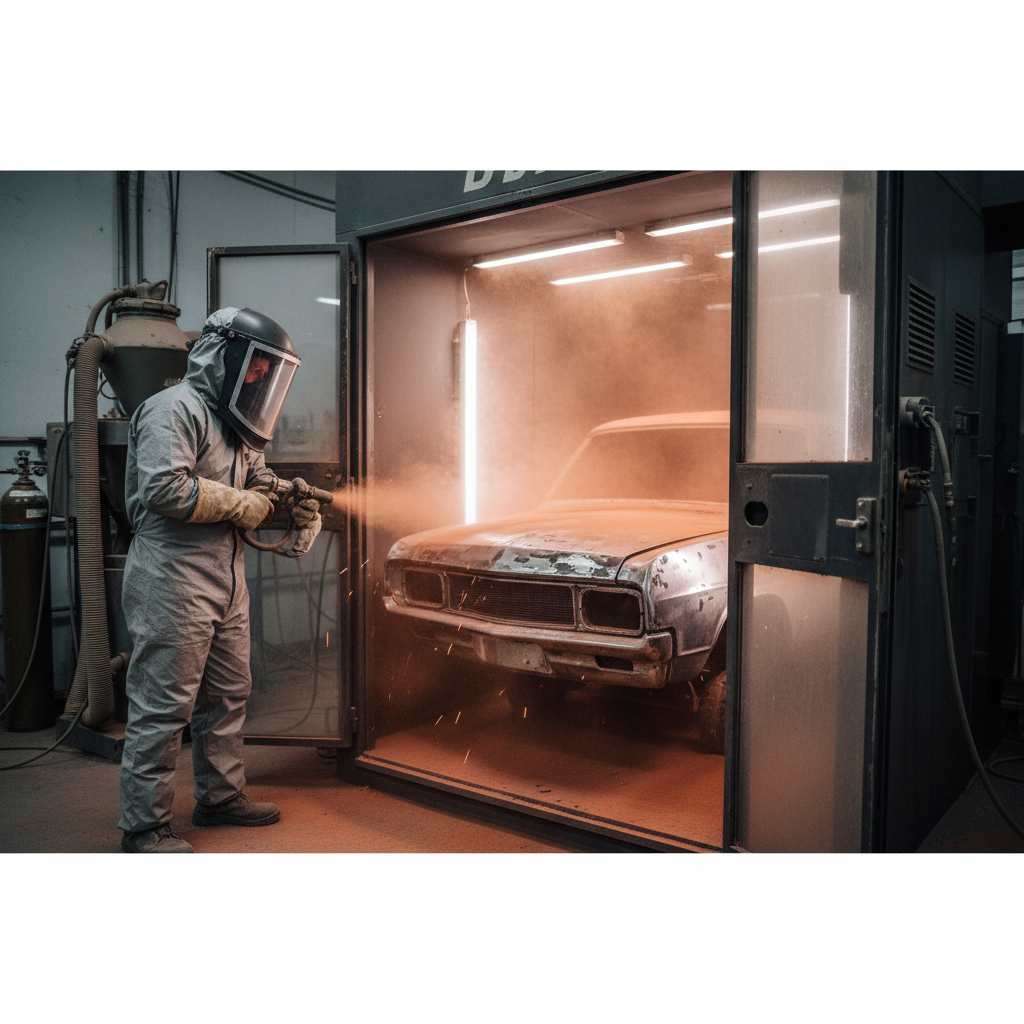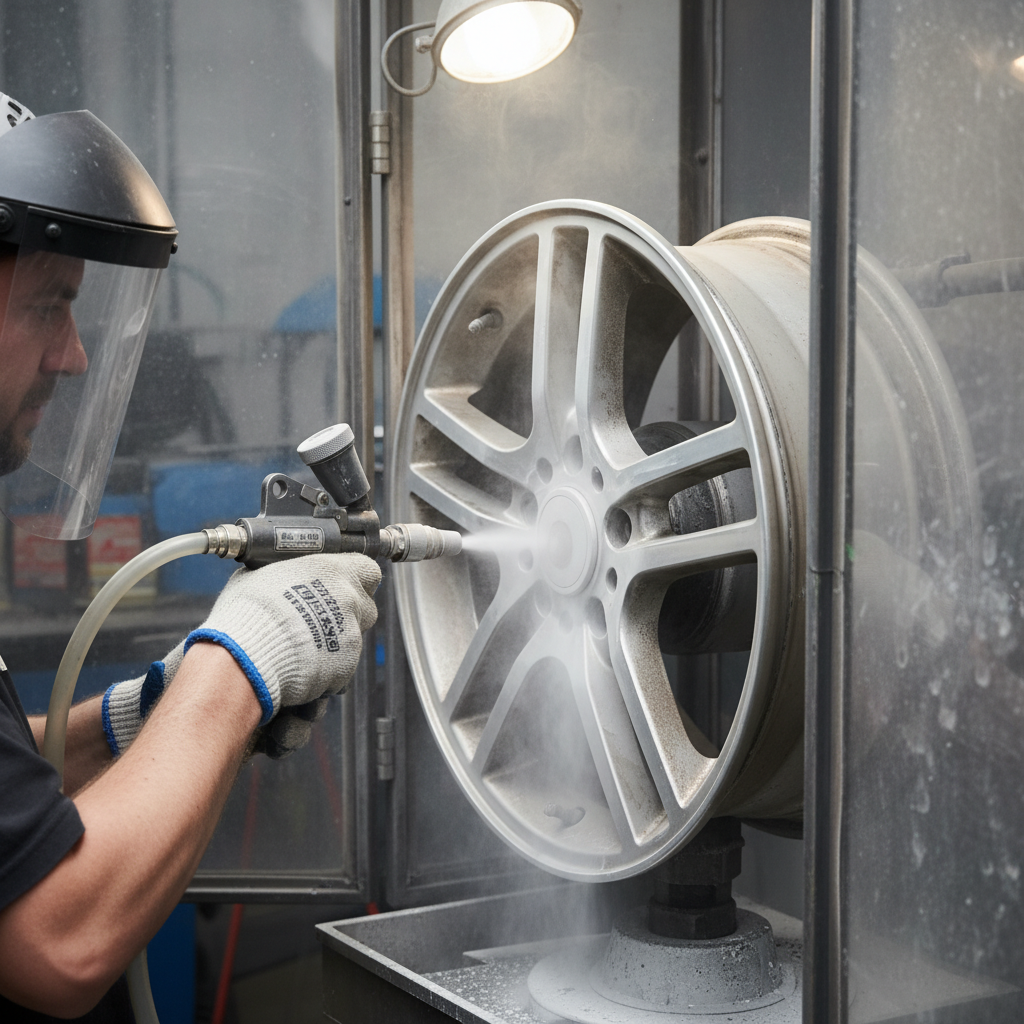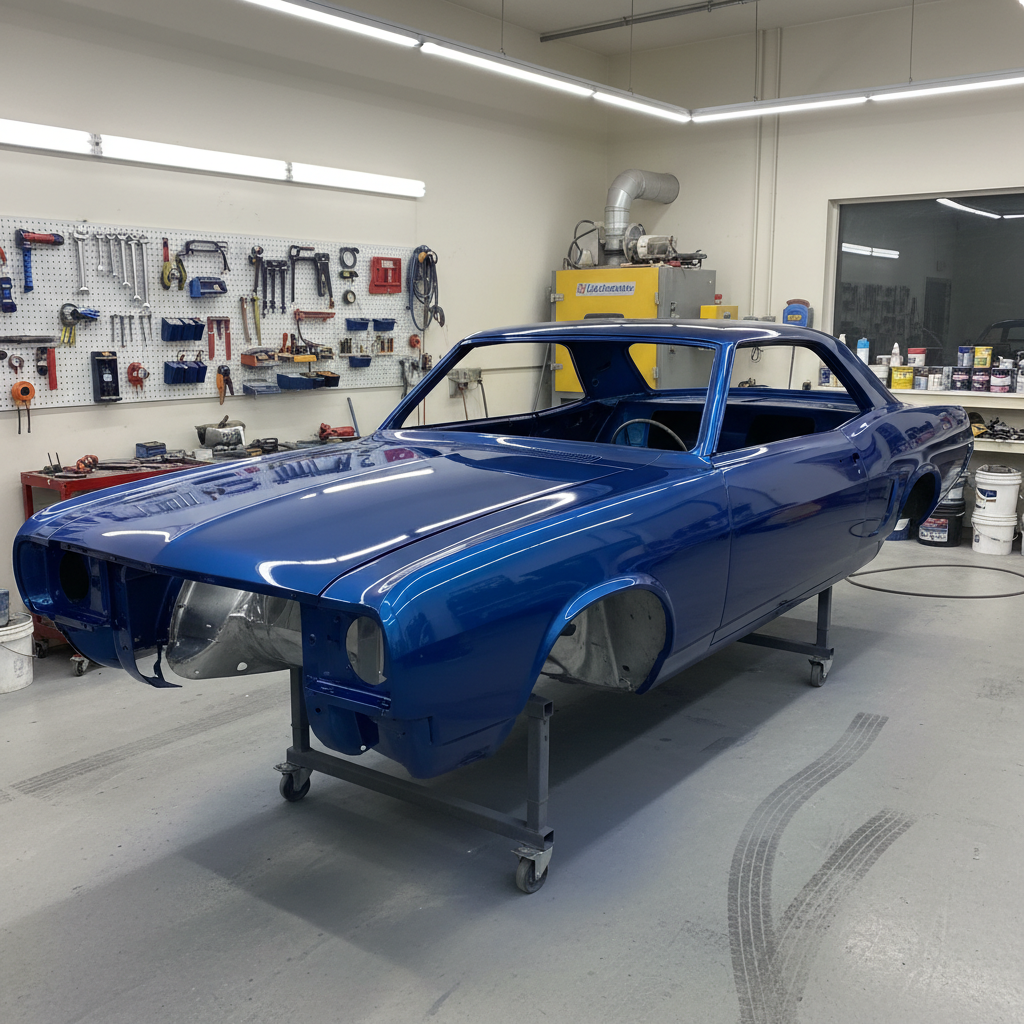Media Matchmaking: The Ultimate Blasting Equipment & Abrasive Combos for Every Car Component
Restoring a car to its former glory isn’t just about elbow grease—it’s about choosing the right blasting equipment and media pairing for each distinct part. Get this right, and your classic can look like it just rolled off the line. Get it wrong, and you risk warping thin steel, pitting precious aluminum, or making a mess that takes weeks to clean up. In 2025, automotive restoration pros and DIYers alike are facing a crowded market of blasters, cabinets, media types, and dustless systems—so which combos truly deliver pro results for body panels, frames, suspensions, engines, aluminum trim, and fiberglass? Let’s map out the exact gear and media you need for flawless results, part by part.
Contents
Component-by-Component: Best Blasting Setups for Every Area of Your Car
1. Body Panels: No Warping Allowed
Thin steel and aluminum panels are notoriously easy to warp under high heat or aggressive media. For these, wet blasting systems like the Eclipse ClearBlast 150 (approx. $7,200, professional-grade) or the ECO-100 Dustless Blaster (around $3,600, portable) are game-changers. Pair these with 40/70 crushed glass media to strip paint and rust without generating heat or dust—and at a far lower risk of panel distortion[2]. Glass bead is also a smart, gentle choice for aluminum panels, leaving a smooth, paint-ready finish.
- Equipment: Eclipse ClearBlast 150 or ECO-100 Dustless Blaster
- Media: Crushed glass ($40-60/50lb bag), Glass bead ($60-80/50lb bag)
Pro Tip: Set your system to 70–90 psi and use a #4–#6 fan nozzle to avoid over-concentration. Wet blasting reduces dust by up to 92%, so you can work indoors without a hazmat suit[2].

2. Frames & Suspension: Aggressive, Efficient Cleaning
Frames, axles, and suspension parts can take much more aggressive media since they’re thick steel, often heavily rusted. Dry blasting with Eastwood B100 Blast Cabinet ($1,750, with dust collector), or portable units like the HotSpot Speed Blaster ($55, budget-friendly), lets you use garnet or aluminum oxide for fast rust and scale removal[5]. Recycled crushed glass is an eco-friendly, multi-use alternative that is popular and cost-effective in 2025[3][6].
- Equipment: Eastwood B100 Blast Cabinet, HotSpot Speed Blaster
- Media: Garnet ($55-70/50lb), Aluminum oxide ($70-85/50lb), Crushed glass
Pro Tip: For large, complex frames, consider a wet/dry system for quick switchovers. Dry blasting is faster for heavy rust, but wet systems help if you’re working in residential neighborhoods or want to minimize messy clean-up.
3. Engine Parts: Precision without Pitting
Engine blocks, heads, and small parts require cabinet blasters for precision. The Eastwood B20 Benchtop Blast Cabinet ($224) is a top pick for home garages[5]. Use glass bead for aluminum and delicate surfaces, or walnut shell for ultra-soft, residue-free cleaning (especially for carburetors, pistons, or as a pre-step before ultrasonic cleaning)[2].
- Equipment: Eastwood B20 Benchtop Blast Cabinet
- Media: Glass bead ($60/50lb), Walnut shell ($45/50lb)
Pro Tip: Always thoroughly rinse engine parts after blasting—residual grit can destroy bearings or internals on reassembly.
4. Aluminum Trim & Wheels: Shine without Scratches
Aluminum trim and wheels need special care. Soda blasting with a dedicated soda blaster (e.g., Eastwood Soda Blaster, $299–$399) removes oxidation and paint without scratching or pitting. Baking soda is also biodegradable and easy to rinse away[8]. For a quick shine or glass-like finish, glass bead is excellent.

- Equipment: Eastwood Soda Blaster
- Media: Baking soda ($30/50lb), Glass bead
Pro Tip: Soda is perfect for chrome, bright trim, and even plastics—it won’t etch or haze finishes. Rinse well to avoid soda residue before final polishing.
5. Fiberglass & Plastics: Gentle but Thorough
For fiberglass bodies or plastic parts, plastic media or walnut shell is key. Use a low-pressure blast cabinet, like the Media Blast Cobra Stage I ($3,200), to prevent gouging or surface burn[4].
- Equipment: Media Blast Cobra Stage I
- Media: Plastic media ($85/50lb), Walnut shell
Pro Tip: Start at the lowest effective pressure (40–50 psi) and test on an inconspicuous area first. For interior plastics, always check for media residue in crevices.
Choosing & Using: Key Trends and Must-Know Buying Tips (2025)
- Dustless/wet blasting is rapidly replacing traditional dry methods for body panels—reducing dust and risk of warping while saving on clean-up time[2].
- Eco-friendly media—like recycled crushed glass and soda—are now the standard, both for environmental and cost reasons[3][6].
- Compact, dual-media cabinets (like the Eastwood Dual Media Blaster) allow instant switching between aggressive and gentle blasting, saving hours per project.
- Expert reviews consistently rank Eastwood, Eclipse, and Media Blast among the most reliable brands for both home and pro shops[5][4][2].
FOMO Alert: Many pro-grade units are on rolling back-orders due to a surge in classic car resto projects—if you spot one in stock, don’t hesitate or you could be waiting weeks!

Immediate Action Plan: Upgrade Your Restoration Workflow Now
- Identify each part of your car—body panels, frame, suspension, engine parts, trim, and plastics/fiberglass.
- Match the right equipment and abrasive media (use the guide above for reference).
- Set up your work area for dust control—wet blast if indoors or in populated areas.
- Test on a small area first to dial in pressure and avoid surface damage.
- Order media in bulk—prices fluctuate and supply chain delays are common in 2025.
Ready to Transform Your Project?
Don’t settle for one-size-fits-all blasting—component-matching your equipment and media is the single smartest move you can make for a pro-level restoration. Whether you’re reviving a barn-find Corvette or prepping a daily driver, the right setup saves time, money, and stress. Act now: stock on top-tier blasters and eco-friendly media is tight—secure yours today and watch your restoration leap ahead of the pack!

